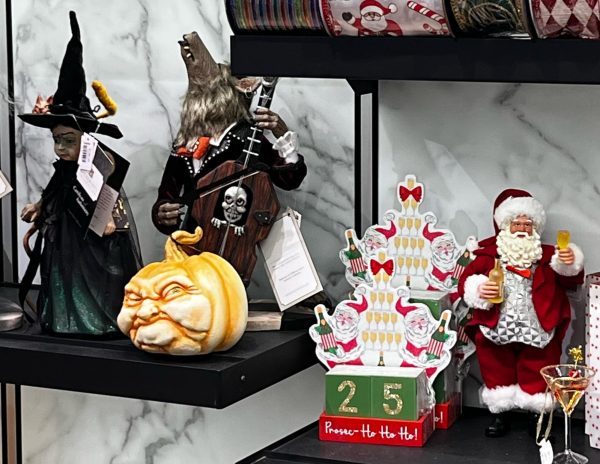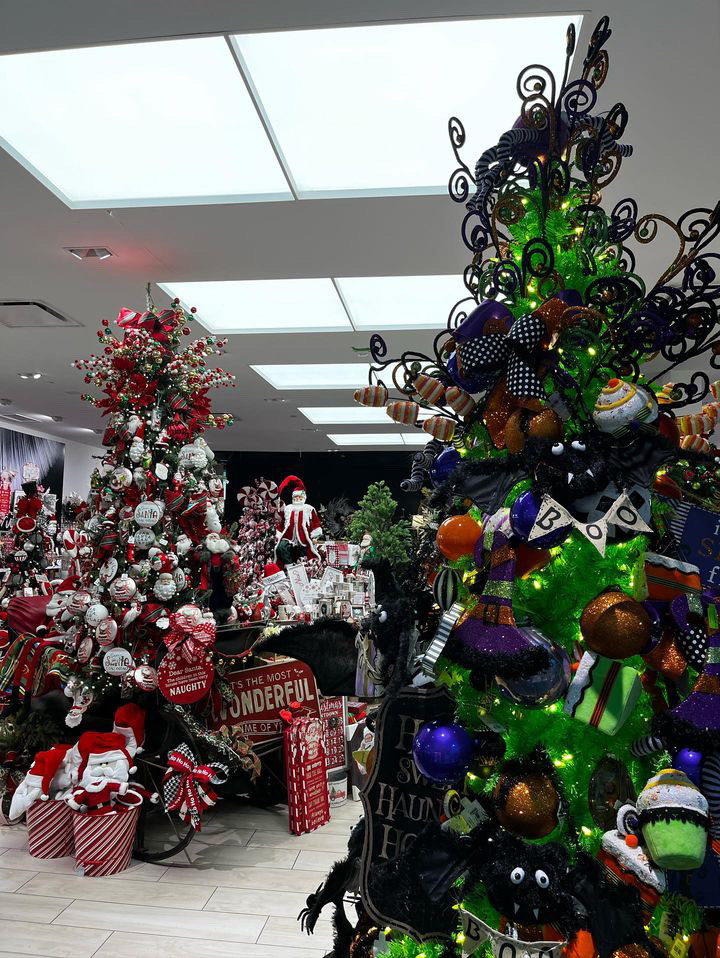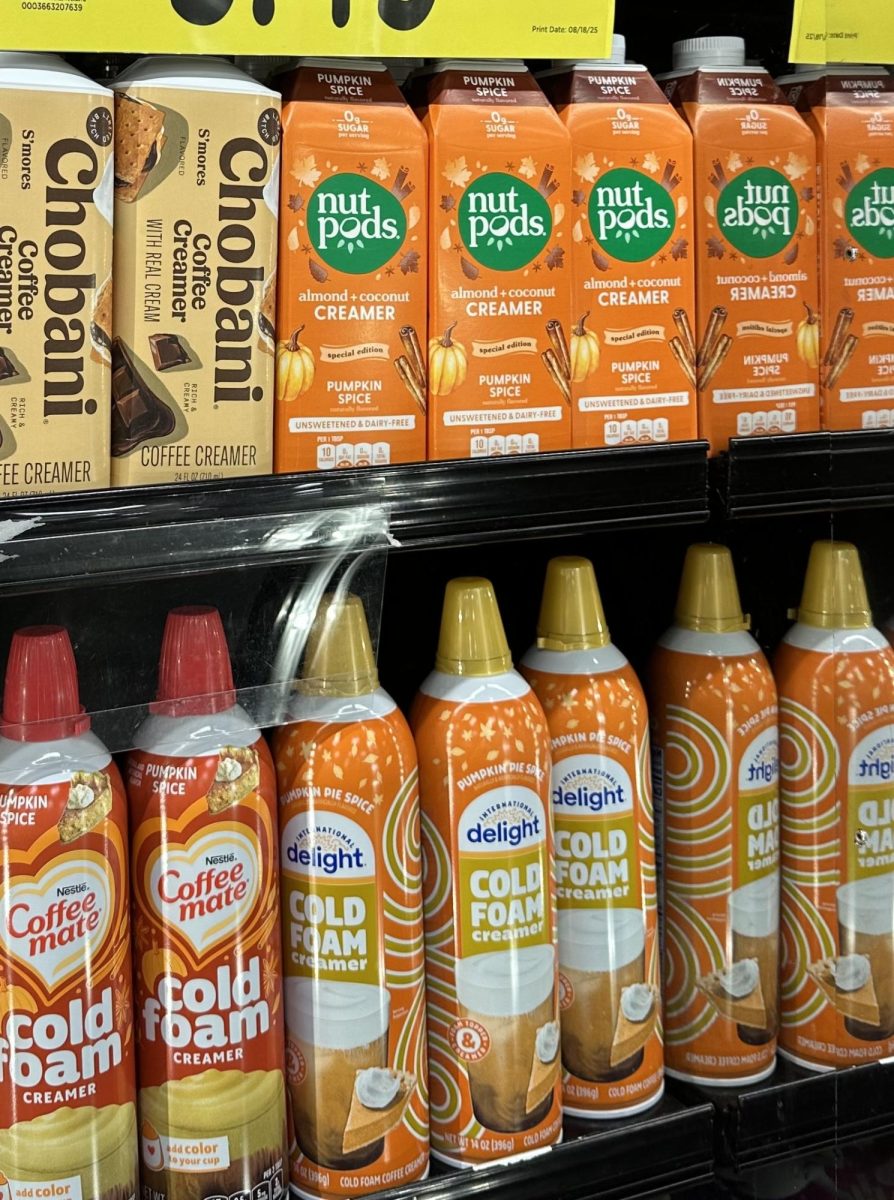Every Fall, the vigorous annual cycle of holidays begins; Halloween, Thanksgiving, Hanukkah and Christmas being the major ones celebrated. During this time, companies push holiday-themed products including an assortment of decorations, holiday-specific flavors and goodies pertaining to the separate holidays. Despite it being the last holiday on the roster before the New Year, Christmas-themed merchandise can be seen in stores as early as mid-September, most out on the floor by October 1st. Though this may seem excessive, companies continue to use the familiar nostalgia that rides alongside this time of the year in hopes of lengthening the time they’re able to push Christmas products.
Department stores like Macy’s and Nordstrom are notorious for putting their Christmas inventory out starting in October. This decision is a strategic one on the company’s part, the turnover of their seasonal merchandise is done to lengthen the shelf time in hopes of increasing the consumption rate. The winter holiday period is only celebrated for three months, so companies seek to push their holiday stock as soon as possible in order to maximize profit. Black Friday is an unofficial American holiday that occurs on the Friday after Thanksgiving and promotes Christmas shopping. Despite the early release of Christmas-related merchandise, Black Friday is advertised to be the best time to buy holiday decorations and gifts. Sales and bargains can be found in most stores across the country as consumers shop their day away. It goes hand-in-hand with the early release of the holiday merchandise as a whole, the entire idea being that there is a prolonged period with a nationwide sale in the middle of it to increase profit during an otherwise short selling window. Since the increase of online shopping, most online sites also honor Black Friday in order to push out their Christmas merchandise. On average, Americans will spend close to $500 on holiday shopping during the Black Friday rush, totaling nearly $9.12 billion across in-store and online purchasing.
The early release of Christmas retail tends to be a polarizing topic for consumers, some loving the Christmas lights and smells in early autumn and some with a visceral objection towards anything relating to Christmas before Thanksgiving. Peter Platosh, a senior at Ida B. Wells High School is a part of the latter group. “I kind of play at my reaction sometimes, but it’s a very visceral response,” said Platosh. “It’s a really disappointed feeling.” There are many others in the IBW community who feel similarly including Ian Haddon, a junior. “I think it’s all very unnecessary. Like, you’re trying to sell all this stuff, so you sell it early? I think you are likely to sell more after Thanksgiving or at least after Halloween,” said Haddon. During the flurry of holiday shopping, retail workers tend to have noticed similar trends. “There were some people that would buy some stuff just because they didn’t want to have to wait,” said Timothy Petrocchi, a former Sears employee and teacher at Ida B. Wells. “It was more like they were not waiting to do it, but they didn’t want to wait too long and then miss out.”

So why are companies putting out Christmas decor before Thanksgiving if it seems that the majority of people only begin to buy it after Thanksgiving? Turns out 51% of Americans plan to start their Christmas shopping before Thanksgiving, according to the US Holiday Shopping Statistics. Amongst this 51% of shoppers are people who enjoy seeing the Christmas product out on the floor in early October. Some stores even have a year-round Christmas section. “I went in there [Hobby Lobby] this summer and was like, yes,” said Lola Gibbons, a senior and Christmas decor lover. “It’s Christmas. It smells like Christmas. Joy is here.” Students agreed that seeing decor in stores early helps them get in the holiday spirit. “The comforting essence and just, like, seeing all of the decorations just gets me really excited,” said Amanda Jessing, a senior at Ida B. Wells.
In this annual tug-of-war over the corporate timing of holiday cheer, the varying opinions contribute to the overriding significance of the holiday time in traditional American culture, making it clear that Christmas is not just a date, but a time when many celebrate full of nostalgia and anticipation. While student opinions on the timing of the decoration vary greatly, ultimately it’s the corporations that benefit from the flurry of the holidays. Holiday sales equate to 20% of the total retail sales over the entire year, 20% crammed into two and a half months. No matter when Christmas stuff hits the shelves, the opinions will remain polarized.















